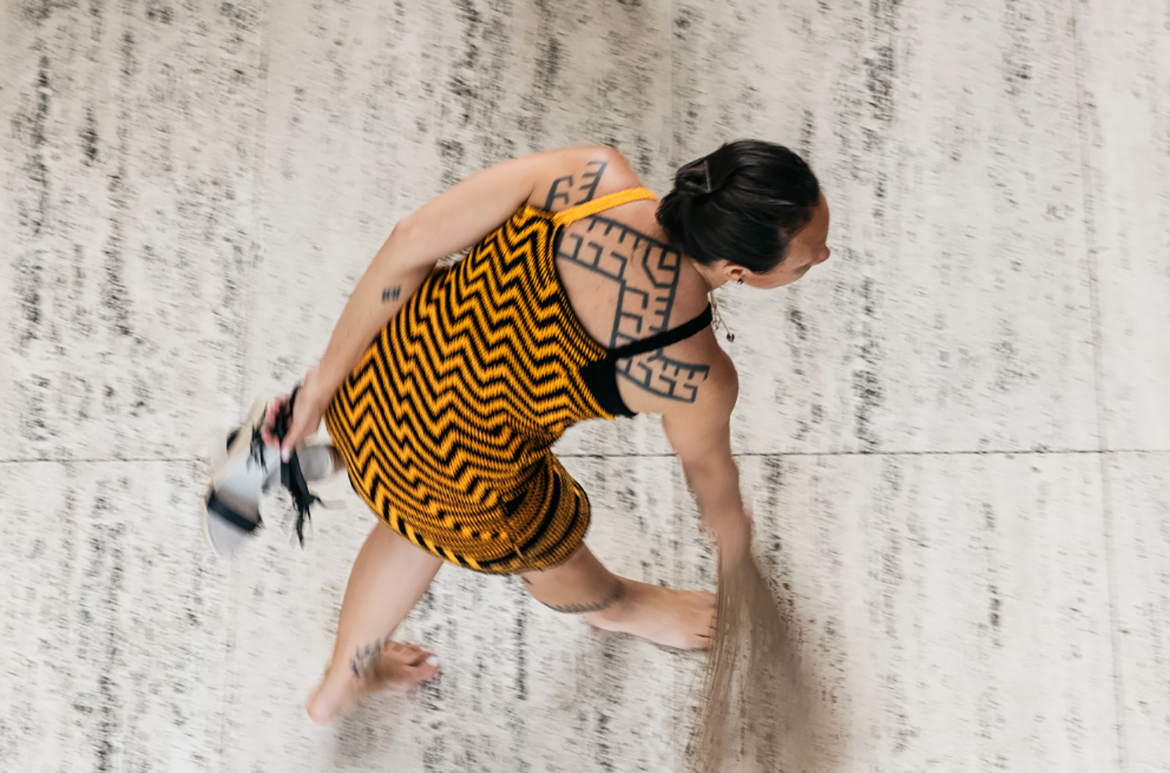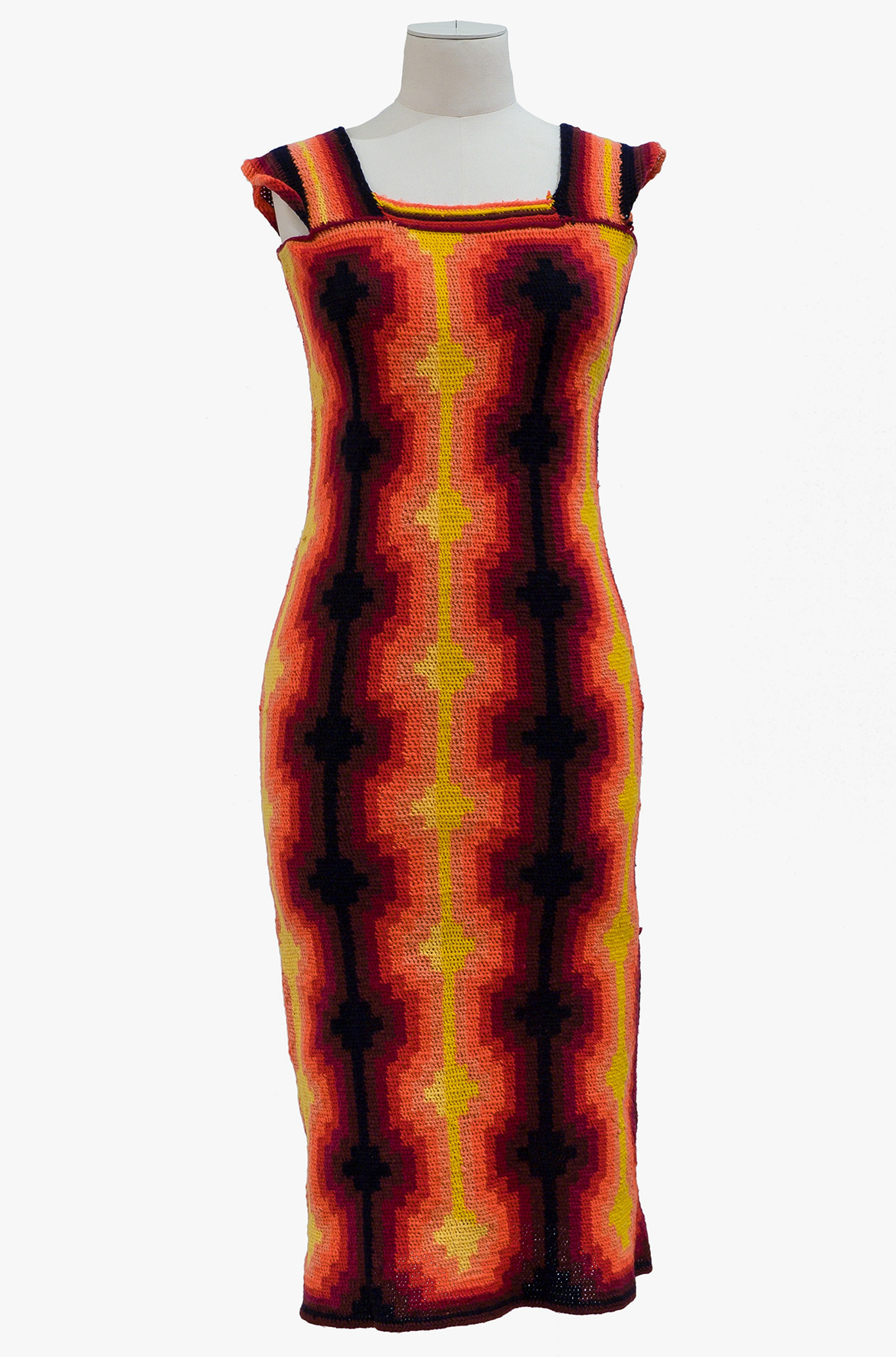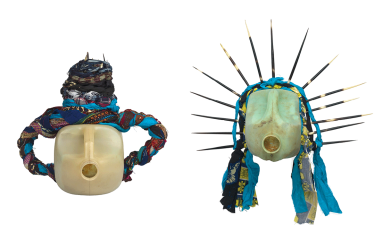‘Twist and loop’ describes both a technique used by women in Papua New Guinea to create knotted fabrics and the movements in choreographed dance sequences performed during sing sing (ceremony and dance). Twist and Loop is also the title of a performance event created for the exhibition ‘No.1 Neighbour: Art in Papua New Guinea 1966–2016’.
Twist and Loop performance

Twist and Loop involves contemporary dancers responding to and dressed in bilum wear designed by leading Eastern Highlands artist Florence Jaukae- Kamel. Jaukae-Kamel first came to prominence with an innovative range of billum garments worn by the athletes representing Papua New Guinea at the Melbourne Commonwealth Games in 2006.
While her choice of billum knotting techniques as a medium flows out of a childhood familiarity with the rich traditions of the Eastern Highlands, her dresses and other garments are undeniably contemporary. Works in the Gallery’s Collection, such as Kalibobo 2010 (illustrated), move beyond traditional forms of the bag and ceremonial apron into the realm of fashion: rather than a clan design, the pattern in this dress is based on a friend’s recall of a lighthouse in Madang.
Florence Jaukae-Kamel ‘Kalibobo’ 2010

For Twist and Loop, the bilum artist is extending her repertoire to create a new body of unique dresses, shaped and patterned to engage with topics and histories ranging from colonisation and the usurpation of land, to the impact of rubgy league culture in the Eastern Highlands. Choreographer Julia Mage’au Gray from the Mekeo peoples of Central Province will respond to a fellow Eastern Highlands associate designs with a new piece, performed by her largely Brisbane-based dance and production company, Sunameke.
Watch | Florence Jaukae-Kamel discusses her work
Mage’au Gray works from the precept of ‘old to new old’, passionately advocating for the continued relevance and vitality of the age-old cultural traditions of Melanesia. Whether choreographing innovative performance pieces, training dancers in a range of dance forms from across Oceania, or developing videos and photographic series about contemporary Melanesian experience, Mage’au Gray maintains the importance of respecting and acknowledging what has gone before. Historical images, recorded interviews with bubus (grandmothers), traditional bilas (ornamentation) and dance moves often feature prominently in her highly layered works.
The strength and resilience of women in Papua New Guinea is one of the strong themes in the exhibition ‘No.1 Neighbour’, with works by both Florence Jaukae-Kamel and Julia Mage’au Gray featured. Working across disciplines and cultures, the creative conversation between them and Sunameke that is Twist and Loop honours the ongoing vitality of women’s fibre and dance traditions in Papua New Guinea, transposing into contemporary beats the longstanding rhythms of PNG women’s creative practice.
Watch | Twist & Loop performance
‘No.1 Neighbour: Art in Papua New Guinea 1966–2016’ is supported by the Gordon Darling Foundation and through the Australian Government through the Australian Cultural Diplomacy Grants Program of the Department of Foreign Affairs and Trade.
‘No.1 Neighbour: Art in Papua New Guinea 1966–2016’ / Queensland Art Gallery / 15 October 2016 – 29 January 2017
#QAGOMA

